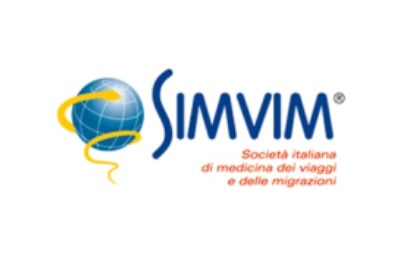Measles
Measles is a highly contagious disease that is easily transmitted by air. It can affects individuals of all ages who are negative for the virus. It is caused by the Measles Morbillivirus virus, which was first isolated in Boston, in 1954.
Despite the discovery of an effective vaccine, measles continues to be a widespread disease in developing countries, like Africa and Asia, and it is also one of the most common illnesses among international travellers.
Measles is endemic throughout the world. Globally, it still remains a significant cause of death for children under 5 years of age; in fact, 134,200 measles deaths were reported in 2015.
CAUSES
The measles virus, characterised by a single-stranded, negative-sense, RNA chain that belongs to the Measles Morbillivirus species of the genus Morbillivirus.
Under the microscope, the virus measures 100 to 250 nm in diameter. The genome is enveloped in a nucleocapsid, which in turn is lined by a double lipid layer that contains two glycosylate proteins: Hemagglutinin, which is responsible for adhesion to target cells, and Fusion Protein, which ensures fusion with the cell membrane of the susceptible cells.
Humans are the only reservoir of the virus, where it lodges in the respiratory tract and eliminated via nasopharyngeal secretions. The virus is not very resistant to chemical and physical agents. However the droplets in which it is excreted by the infected individual can remain in the air for 2 hours, and consequently infect other people.
TRANSMISSION
Measles is an airborne disease that is mainly transmitted via droplets (small particles emitted from the respiratory system when someone coughs, sneezes or talks, over short distances of usually less than 1 meter.
Another element not to be overlooked is the possibility that measles can be transmitted by aerosol particles. In certain situations, such as poorly ventilated room, the virus can survive for up to 2 hours, infecting susceptible people who inhale air containing the virus.
GEOGRAPHICAL DISTRIBUTION
Measles is one of the most contagious epidemic diseases in the world. This means it is constantly present in the community, where it infects susceptible people, who subsequently develop permanent immunity to the disease after the initial infection.
Prior to vaccines, measles claimed numerous lives worldwide. According to WHO data, measles epidemics occur every 2-3 years, causing 2.6 million deaths per year.
It was not until the discovery of a measles vaccine and the launch of an immunisation programme (1960), that the epidemic picture changed dramatically. From an analysis of the latest data published by WHO, between 2000 and 2018 the measles mortality rate significantly declined, with a 73% decrease worldwide. Approximately 23.2 million lives were saved during this period.
However, despite more than 50 years of vaccination, unfortunately, measles still remains a leading cause of death in infants, particularly in children under 5 years of age. In 2018, 140,000 measles deaths were recorded worldwide, most of which were among children.
On a national level, from the 1970s until the 1990s, the peaks of measels epidemics in Italy were high. With the introduction of a vaccine, and particularly the increase in vaccination coverage since 2000, cases have been steadily declining, but not in line with WHO and National Measles Elimination Plan goals. According to a recently published study, Italy was unable to meet its goal of eliminating measles by 2015, and, conversely, cases increased slightly between 2014 and 2015. The hypothesis is that this increase is due to the circulation of new imported strains that are linked to international travel.
SYMPTOMS
On average, measles symptoms tend to appear about 10 days after exposure to the source of infection, but the incubation period can range from a minimum of 7 to a maximum of 18 days.
The clinical manifestation of the disease can be divided into 3 stages:
- The prodromal or mucositis or catarrhal stage, which lasts approx. 4-5 days, characterised by the onset of fever, cold, and involvement of the oral, conjunctival, and nasal mucous membranes with production of phlegm. Infected individuals may complain of photophobia (sensitivity to light), congestion of the eyes, and lacrimation (runny eyes). In terms of the oral cavity, the mucosa appears red and swollen; while the soft palate, on the other hand, presents with small, but evident petechiae (tiny spots).
Around the second or third day of the prodromal stage, whitish spots, typical of measles, known as "Koplik's spots" appear and usually disappear within 1 to 2 days.
- The exanthematous stage, which lasts approximately 4-5 days, consists of the appearance of a red maculopapular rash, which extends to the neck, trunk and extremities. The red spots, which may be itchy, start to form in the areas behind the ears and the nape of the neck, spreading to the face, trunk, and upper limbs, followed by the rest of the body. After 24-48 hours, these spots tend to darken and converge, forming a single mass. At this stage, the fever continues to persist, and slight swelling of the posterior angle of the mandibular and cervical lymph nodes may be observed.
- In the convalescence phase, i.e., the stage when the disease resolves, the rash tends to regress in the same direction as its onset, from the neck to the extremities. The fever disappears and the skin is left with a tendentially brownish discoloration, accompanied by dandruff-like flaking.
Generally speaking, measles is benign and usually resolves within approximately three weeks, providing life-long immunity. In some cases, however, the infection can develop into a severe form of disease, especially in high risk individuals.
Measles complications can occur in approximately 30% percent of cases, sometimes with extremely serious consequences. Most complications are due to bacterial superinfections of the respiratory system, such otitis, laryngitis, bacterial bronchopneumonia, and interstitial pneumonia.
Another known complication of measles is diarrhoea. Neurological complications, such as encephalitis, which can cause learning disabilities, or subacute sclerosing encephalitis, a fatal but very rare condition that occurs years after the disease (approx. 7-10 years later), may also occur.
Other complications can affect the heart, eyes, and immune system (plateletopenia). By attacking the immune system, the virus can supress cellular immunity, which can also reactivate latent tuberculosis. Several studies have shown that, in some individuals, the virus can damage the immune system, making it more vulnerable to infections that are normally harmless for most people, like the flu.
Another important issue to underline, are the complications of measles in pregnant women, which is associated with a risk of miscarriage, premature birth, and intrauterine death, the latter of which increases when the infection occurs during the first and second trimesters of pregnancy. Whereas, infections that occur close to the time of birth can increase the risk of neonatal measles.
DIAGNOSIS
The diagnosis of measles is ascertained through the clinical evaluation of the patient's symptoms. Koplik's spots are a typical sign of measles and allow for its diagnosis during the prodromal phase.
Measles can be diagnosed in the laboratory with a measles-specific immunoglobulin IgM, which appear in the blood about 1-2 days after the rash, indicating an infection is in course.
Another diagnostic method is based on the detection of the virus in respiratory secretions using the Polymerase Chain Reaction (PCR) technique.
TREATMENT
To date, there is no specific treatment for measles. The only treatment available is supportive treatment to relieve the symptoms of the disease, ensure adequate hydration, especially in cases of diarrhoea, and the administration of an antipyretic to reduce fever.
The use of the antiviral, ribavirin, in immunocompromised individuals with extremely serious complications from measles has been tested, but the drug is still in the experimental stages.
WHO recommends the use of vitamin A in people with measles, especially children, because malnutrition and the deficiency of this vitamin have been shown to increase the risk of measles complications.
PREVENTION
The only effective weapon against measles is the vaccine, which provides long-lasting immunity and is considered one of the safest and most effective vaccines.
The vaccine is mandatory and is administered in the form of a combined trivalent or tetravalent vaccine. The trivalent MPR vaccine prevents measles, mumps and rubella infections, while the quadrivalent MPRV vaccine prevents measles, mumps, rubella and varicella (chicken pox).
Sources:
Bibliography:
Brigitta M. , Rory D. , Stephen M. , Paul D. and Rik L. Measles Virus Host Invasion and Pathogenesis. Multidisciplinary Digital Publihing Istitute and Viruses, 20.025847//16.
Magurano F., Baggieri M., Filia A., Del Manso M., Lazzarotto T., Amendola A., D’Agaro P, Chironna M., Ansaldi F, Iannazzo S., Bucci P., Marchi A., Nicoletti L. Towards measles elimination in Italy: virological surveillance and genotypes trend (2013-2015). Virus Research, 2017.
Moroni M., Spinello A., Vullo V. Manuale di Malattie Infettive. Edra LSWR, Masson, 2018
Malattie Infettive: Morbillo, Ministero della Salute, 2018, disponibile a :
Measles, World Health Organization, 2019, disponibile a:
Measles Annual Epidemiological Report for 2019, European Centre for Disease Prevention and Control, 2019, disponibile a:
Morbillo & Rosolia News: il bollettino della sorveglianza integrata morbillo-rosolia, Istituto Superiore di Sanità, 2020, disponibile a:
www.epicentro.iss.it/morbillo/bollettino
Measles in Italy: weekly report, Istituto superiore della Sanità, 2017, available on
Epicentro morbillo Measles WeeklyReport N35.pdf





